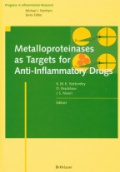Developments in Heat Transfer
Petros Antonis
ISBN: 9781681173061
Vydavatelství: Scitus Academics
Rok vydání: 2017
Vazba: Hardback
Počet stran: 318
Původní cena: 6 043 Kč
Výstavní cena:
5 137 Kč(t.j. po slevě 15%)
(Cena je uvedena včetně 10% DPH)
Katalogová cena: 160.99 GBP
Nárok na
dopravu zdarma
Termín dodání na naši pobočku v Brně je přibližně 3-4 týdny.
"Enhanced heat transfer has evolved into an important component of heat transfer experimentation and theory. Heat can be transferred from one place to another by three methods: conduction in solids, convection of fluids (liquids or gases), and radiation through anything that will allow radiation to pass. The method used to transfer heat is usually the one that is the most efficient. If there is a temperature difference in a system, heat will always move from higher to lower temperatures. The transfer of heat is normally from a high temperature object to a lower temperature object. Conduction occurs when two object at different temperatures are in contact with each other. Heat flows from the warmer to the cooler object until they are both at the same temperature. Conduction is the movement of heat through a substance by the collision of molecules. At the place where the two object touch, the faster-moving molecules of the warmer object collide with the slower moving molecules of the cooler object. As they collide, the faster molecules give up some of their energy to the slower molecules. The slower molecules gain more thermal energy and collide with other molecules in the cooler object. This process continues until heat energy from the warmer object spreads throughout the cooler object. In liquids and gases, convection is usually the most efficient way to transfer heat. Convection occurs when warmer areas of a liquid or gas rise to cooler areas in the liquid or gas. As this happens, cooler liquid or gas takes the place of the warmer areas which have risen higher. This cycle results in a continuous circulation pattern and heat is transferred to cooler areas. The discussion of heat transfer has been structured around some everyday examples such as the cooling of a hot mug of coffee and the warming of a cold can of pop. To give an overview of the current state of this important technologyfor the past ten years, representative developments in each category of enhancement techniques are cited and commented on. Developments in Heat Transfer emphasizes on experimental and theoretical investigations, assessment and enhancement techniques aspire to be useful for many researchers, scientists, engineers and graduate students. Both conduction and convection require matter to transfer heat. Radiation is a method of heat transfer that does not rely upon any contact between the heat source and the heated object. For example, we feel heat from the sun even though we are not touching it. Heat can be transmitted though empty space by thermal radiation."
